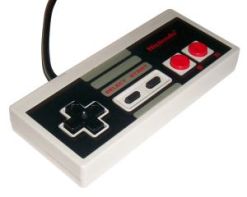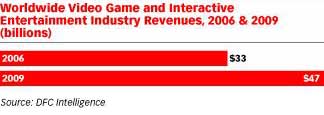Background: Out of the Bedroom
Videogames are becoming the hip, sociable and family-friendly hub of the living room. If a recent Sony endorsed study is to be believed, they may even be good for you.
It’s a far cry from the dawn of the games industry back in the early 70’s where tentative pokes at the technology materialised in the form of black-and-white TVs married to crude cabinet setups like the Nutting Associates effort Computer Space;
On the back of ports of more popular titles like Pong and Pac-Man, videogames slowly made their transition into homes with systems from Atari and it’s rivals like the Maganavox Oddyssey and Colecovision.
All Change
It was the crash of the early 80’s which began to galvanise the industry into something recognisable by modern standards.
With the early pioneers swept aside, the way was clear for the so-called ‘third generation’ of platforms.
By the mid-80’s the market had been split between two media-savvy Japanese contenders: Nintendo and Sega.
Their blend of innovation in pioneering the first joypads, along with a fresh approach to game design revitalised consumer interest.
As the decade drew to a close, publications like Nintendo Power had begun to appear. The Wizard became a box-office smash due to its videogame product-placement.
Less a sub-genre of toy, videogames were beginning to form a cultural movement.
Connected players
Present day and gamers number in the millions, while the stereotype of the bedroom gamer has began to slip.
Modern controversies haven’t helped. The Columbine Massacre and Doom are still inextricably linked in many minds, and negative coverage of titles such as Grand Theft Auto (“Ban This Sick Filth” – The Daily Mail) seems to be here to stay.
However with the current generation, the focus has shifted from the solitary player to connected players.
Out of the bedroom, into the living room and into the family. Nintendo’s Wii is currently leading this charge,
Battle for the living room
The Wii‘s central conceit lays in its motion detection technology. Along with huge sellers like Wii Fit and Wii Sports, it has built an enviable profile as a fitness promoting, family-orientated platform with inter-generation appeal.
The approach has garnered Nintendo just under half of current console sales worldwide. A number that works out in the region of 34 million units shifted in under two years.
In the face of those kind of numbers competitors are taking note. The battle for the living room seems to have begun and sponsored studies are just the start.
“Videogames Can Contribute to a Child’s Education” say Parents
“Videogames can contribute to a child’s education, improve hand-eye coordination and aid problem-solving skills.”, according to the findings of a Sony Online Entertainment commissioned study, reports Edge Online.
The findings, published in the November issue of U.S. parenting magazine Family Circle, established that 75% of those who took part in the study considered videogame play to possess educational value and to improve hand-eye coordination.
Other key findings included 84% of those surveyed noticing “an increase in their child’s typing skills from playing PC/online games.”, with 72% saying “their kids play games online with other people sometimes or all the time.”
Acceptance
SEO’s own view on the study was reported on Gamedaily.com,
“In addition to basic education elements, the survey suggests video games are teaching children to think strategically. The majority of video games require players to follow rules, think tactically, make fast decisions and fulfill numerous objectives to win. This resonates with the 70% of the parents surveyed who have seen their children’s problem-solving skills improve since they started playing video games.”
The reach of this study marks something of the widening acceptance of gaming as less of an unhealthy fringe hobby, and more of a family experience.
Playing Together
According to the Entertainment Software Association, in 2008 25% of U.S gamers comprise of under-18s, along with the age of the average player rising to 35, with one in four ever the age of 50.
Sony appears to be aware of this trend, with SEO president John Smedley quoted as saying: “…parents are involved with and aware of what their kids are playing. The even better news is that parents and kids are playing together.”
Better news also for the games industry with the apparent convergence of a broadening audience taking place on the back of more family formats like Nintendo’s Wii. These factors have contributed significantly to market growth with this generation of consoles and speculation remaining healthy,
With the market’s traditional core of 18 to 34 year old males reaching saturation, the race is now on to mine more neglected sectors like the female and over-34 audiences. Infiltration of a typically skeptical family market is a natural step in reaching them, and one that is set to continue.
Want to know how videogames are getting into our living rooms?
-
Archives
- December 2008 (2)
- November 2008 (34)
- October 2008 (47)
-
Categories
-
RSS
Entries RSS
Comments RSS

